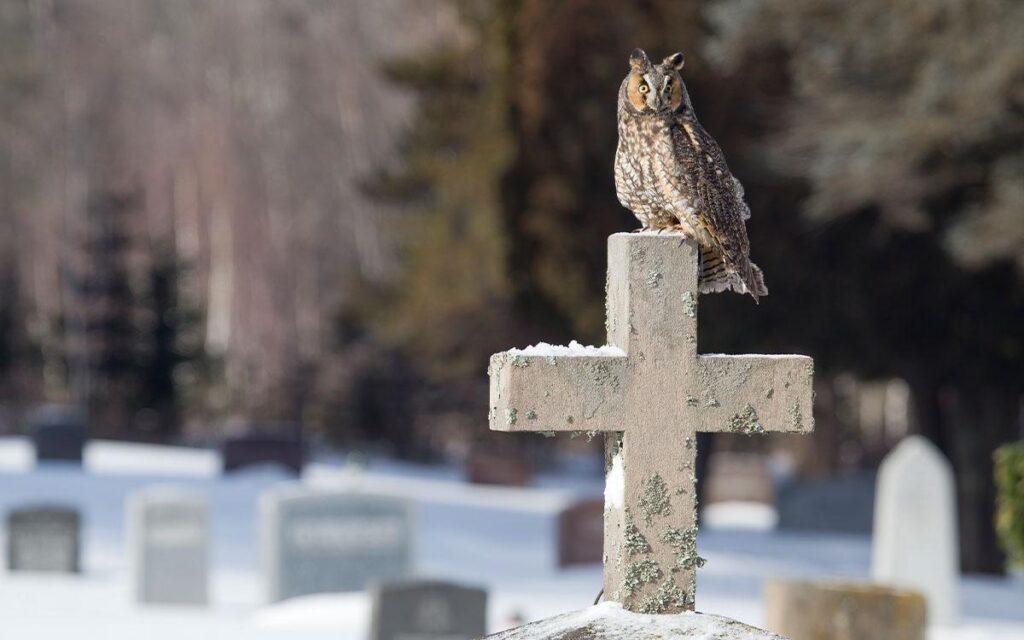Burial Grounds: Havens for Wildlife and Sources of Pollution

Long-eared owl perched atop a tombstone in a Minnesota cemetery. | Photo by Stan Tekiela/Getty Images
When biologist Yuval Itescu moved from Israel to Germany, he discovered a unique aspect of his new environment: Berlin’s urban cemeteries. During his walks, he observed a rich variety of wildlife, including birds, squirrels, and foxes. This led him to explore biodiversity in cemeteries, a topic that merges ecological and human dimensions, yet remains under-researched.
Cemeteries present a paradox in the Western world. They are seen as tranquil spaces for reflection but are often associated with death and fear. For wildlife, cemeteries offer both refuge and danger. Itescu, alongside Jonathan Jeschke from the Freie Universität Berlin, published a study comparing cemetery biodiversity with urban parks and gardens. Their research showed cemeteries host more native species, offering crucial habitats for endangered species, including orchids.
The rural cemetery concept, with its park-like landscaping, is about 150 years old. Mount Auburn Cemetery in Massachusetts exemplifies this design. It employs an ecologist, Paul Kwiatkowski, who initiated conservation efforts improving water quality and habitat management, drawing national research interest.
Mount Hope Cemetery in Rochester, New York, also enhances biodiversity. Managed by the Friends of Mount Hope, it maintains its natural habitat while offering educational opportunities. Originally a woodland, it now serves as an urban wildlife sanctuary.
Globally, cemeteries are increasingly recognized for their ecological roles. A new beetle species was discovered in Brooklyn’s Green-Wood Cemetery, and research in Illinois found cemeteries hosted significantly more woodpecker habitats than parks. In Turkey, cemeteries help reduce urban heat through tree preservation. In Britain, church graveyards protect rare yew trees.
However, cemeteries can also contribute to pollution. The Green Burial Council notes that the U.S. uses millions of gallons of embalming fluid annually, containing harmful chemicals. Coffins contribute to environmental degradation through the use of wood, concrete, and metals.
Embalming, a practice popularized during the Civil War, presents significant environmental risks, especially to groundwater. Yet, these practices can be altered. “Green burials,” which minimize chemical use and utilize biodegradable materials, are gaining popularity and affordability, offering a more environmentally friendly alternative.
Halloween,
wildlife,
ecosystems,
saving wild places
Original Story at www.sierraclub.org
